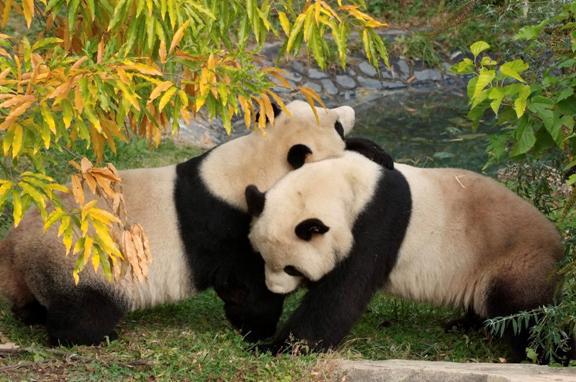Panda Cub's Death Remains a Mystery

Veterinarians are still unsure what caused a week-old panda cub to die at the Smithsonian National Zoo, but they said Monday (Sept. 24) the newborn had fluid in its abdomen and a "slightly abnormal liver."
The 4-ounce (100-gram) cub had no outward signs of trauma or infection when it was found dead Sunday (Sept. 23) morning. Caretakers confirmed Monday that its 14-year-old mom Mei Xiang did not crush her baby.
"The only abnormalities the veterinarians have detected so far were some fluid in her abdomen and a slightly abnormal liver," zoo officials said in a statement. (The cub appears to be female, veterinarians said.) "They don't know yet whether either of those things is significant, and they're still investigating."
The Washington, D.C., zoo said the loss is "especially devastating." The cub's birth came as a joyful surprise last week following several years of unsuccessful attempts to get Mei Xiang pregnant. She had been artificially inseminated on April 29 and 30 with sperm from the zoo's adult male, Tian Tian, but it's almost impossible to tell if a female panda is pregnant until a cub materializes. The panda parents have only one other cub, Tai Shan, who was born in 2005 and moved to China in 2010.
In addition to investigating the cub's death, veterinarians are monitoring Mei Xiang's well-being.
"We fully anticipate that she'll return to her normal wonderful giant panda self in a relatively short amount of time," zoo officials said in a statement. "She appeared to sleep well last night. Watchers did notice her cradling an object, as she did before the birth of the cub. We believe this is an expression of her natural mothering instinct."
Panda keepers were first alerted to trouble when Mei Xiang let out a distress call Sunday shortly after 9:00 a.m. ET. Caretakers were able to get to the unresponsive cub an hour later and immediately performed CPR, but they couldn't revive the newborn, zoo officials said.
Get the world’s most fascinating discoveries delivered straight to your inbox.
"The cub was just beautiful — beautiful little body, beautiful face with the markings just beginning to show around the eyes," Suzan Murray, the zoo's chief veterinarian, said during a press conference Sunday.
As only 1,600 giant pandas are left in the wild, captive breeding is an important way for scientists to study and conserve the endangered species.
Editor's Note: This article was updated at 1:30 EDT with new information from the National Zoo.
Follow LiveScience on Twitter @livescience. We're also on Facebook & Google+.



